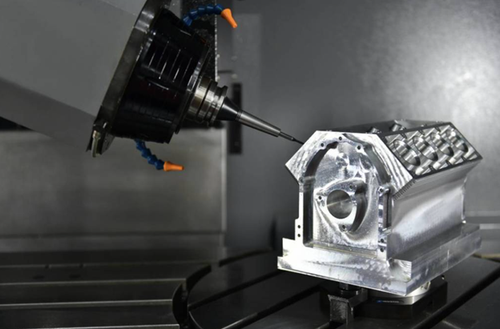Metal fabrication is a vital industry, responsible for producing a wide range of customized metal products, from automotive components to construction materials. In this in-depth article, we will delve into the world of metal fabrication, covering various methods, including press brakes, stainless steel utilization, and other manufacturing processes that transform raw materials into both functional and aesthetically pleasing products.
Understanding Metal Fabrication
At its core, the metal fabrication process involves a series of techniques designed to shape metal into the desired form. These include cutting, bending, and welding, which collaborate to create unique metal pieces. The selection of methods and their sequence depends on the product’s design, material, and intended use.
Types of Metal Fabrication
Metal fabrication encompasses various processes tailored to different materials and applications. Some common ones are:
Sheet Metal Fabrication
Sheet metal fabrication involves transforming metal sheets into diverse shapes through cutting, bending, and joining techniques. This method is prevalent in the automotive, aerospace, and construction industries.
Machining
Machining is a subtractive process that removes material from a workpiece using tools such as lathes, mills, and drills. It is widely used to create precise components and intricate details.
Welding
Welding is the process of fusing metal pieces together by melting them at the joint. Various welding methods, including TIG, MIG, and arc welding, offer distinct advantages and applications.
Cutting
Cutting processes, including plasma and laser cutting, are employed to shape metal. Plasma cutting utilizes a high-velocity jet of ionized gas, while laser cutting employs a focused beam of light to cut through the metal.
The Metal Fabrication Workflow: A Detailed Overview
The metal fabrication workflow is a complex, multi-step process that ensures the final product meets desired specifications and performance standards. This comprehensive overview breaks down each stage of the metal fabrication workflow for a better understanding of the entire process.
1. Design and Engineering
The initial step in metal fabrication is the creation of detailed plans, blueprints, or computer-aided designs (CAD) based on the client’s requirements. These designs specify the materials, dimensions, and manufacturing processes necessary for the final product. Engineers may use various software tools to optimize and analyze the design’s structural integrity and performance.
2. Material Sourcing
Once the design is finalized, appropriate materials are sourced. Factors like strength, durability, weight, and corrosion resistance influence material selection. Common choices include stainless steel, aluminum, and carbon steel.
3. Material Preparation
Before fabrication begins, materials are prepared to meet required specifications. This stage involves processes like cutting large-scale metal sheets to size, cleaning surfaces to remove dirt, grease, or contaminants, and applying protective coatings if necessary.
4. Fabrication Techniques
The main fabrication stage employs various techniques, such as cutting, bending, and welding, to shape the metal as desired. Cutting methods, like plasma and laser cutting, create intricate shapes and patterns. Press brakes accurately bend metal sheets, while different welding types, such as TIG and MIG, securely join metal pieces.
5. Assembly
Some projects involve assembling multiple components to create complex products. This step requires careful alignment and joining of parts to ensure proper fit and functionality. Bolting, riveting, and adhesive bonding are some of the techniques used for assembly.
6. Quality Control and Inspection
Quality control measures are implemented throughout fabrication to ensure the final product meets specifications and industry standards. This includes visual inspections, dimensional checks, and non-destructive testing methods like radiography and ultrasonic testing to detect defects or imperfections without causing damage.
7. Finishing and Post-Processing
After fabrication, products may undergo finishing and post-processing techniques to improve appearance, performance, or longevity. These processes can include painting, powder coating, anodizing, galvanizing, or polishing. The choice depends on the desired look and protective qualities. Some materials may also require heat treatment for improved mechanical properties or stress relief.
8. Packaging and Delivery
Once the product is fabricated, inspected, and finished, it is carefully packaged for transportation and delivery to the client or end user. Proper packaging protects the product during transit and ensures it arrives in pristine condition. Delivery may involve local or international shipping, depending on the project’s scope and requirements.
Choosing the Right Fabrication Process
Selecting the appropriate fabrication process is crucial for project success. Factors to consider include material type, design complexity, production volume, budget, desired finish, and available expertise and equipment. Evaluating these factors will help you make the right choice for your metal fabrication project.
Tools and Equipment Used in Fabrication Shops
Fabrication shops utilize various tools and equipment for different processes, such as press brakes for bending, plasma cutters for cutting, and welding machines for joining metal pieces. Additionally, hand tools like deburring tools are used during fabrication to clean and finish metal components.
Safety Practices in Metal Fabrication
Safety is paramount in any fabrication environment. Fabrication shops must adhere to strict safety practices, including wearing proper protective equipment, maintaining a clean and organized workspace, and ensuring employees receive adequate training in tool and equipment safety.
Custom Metal Fabrication: Advantages and Disadvantages
Custom metal fabricated products offer advantages such as unique design flexibility and the ability to adjust the fabrication process as needed. However, they may have drawbacks like increased costs and longer lead times compared to mass-produced items.
Materials Used in Metal Fabrication
Various materials can be used in metal fabrication, depending on the desired properties and applications. Some common materials include:
Stainless Steel: Known for its corrosion resistance, strength, and durability.
Aluminum: Lightweight and versatile.
Carbon Steel: Offers excellent strength and durability at a lower cost.
In conclusion, metal fabrication is a multifaceted process that uses various techniques and materials to create custom metal products. Understanding the different types of metal fabrication, the tools and equipment used, and materials suitable for various applications will aid in making informed decisions for your next metal fabrication project.



